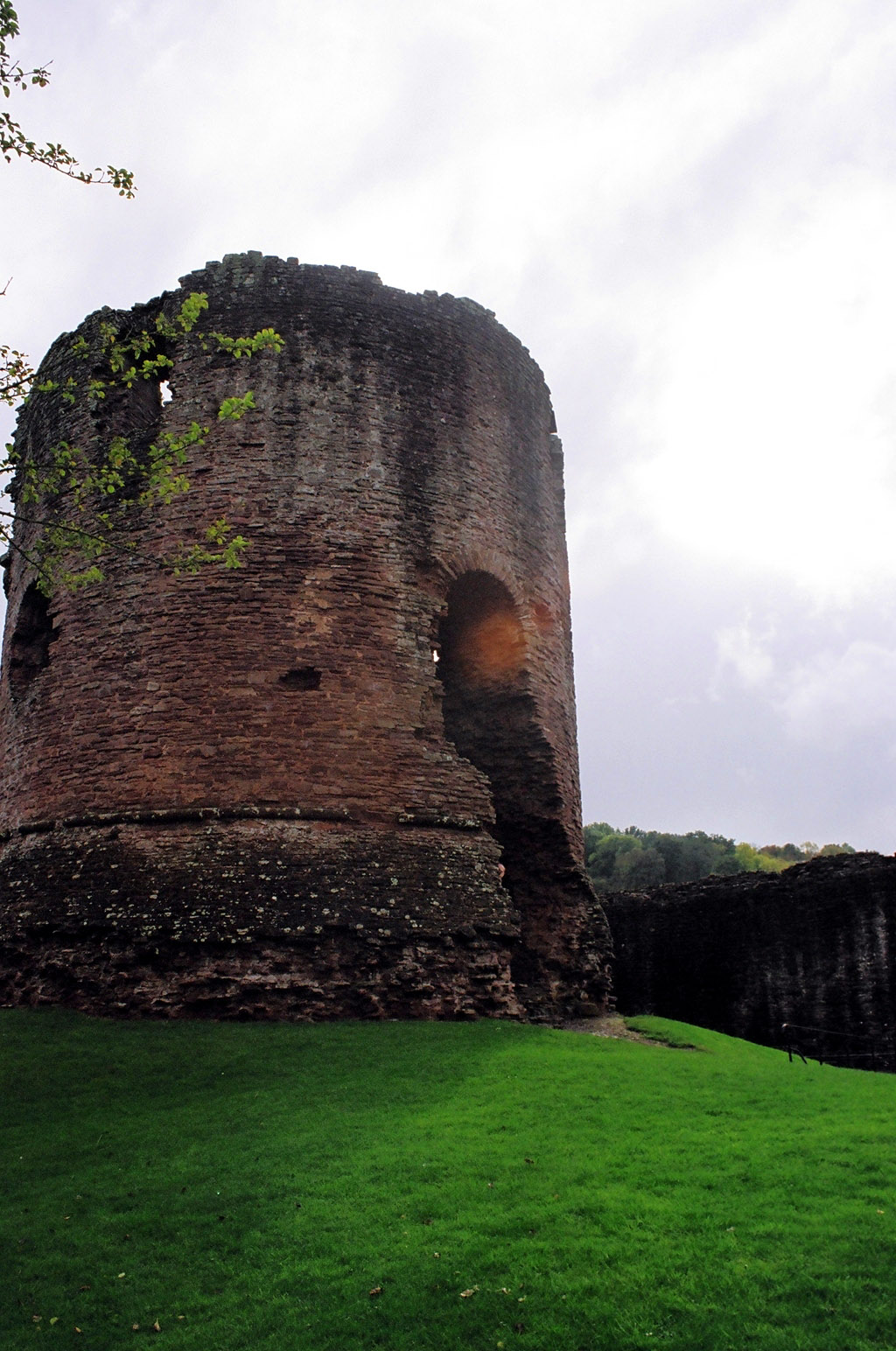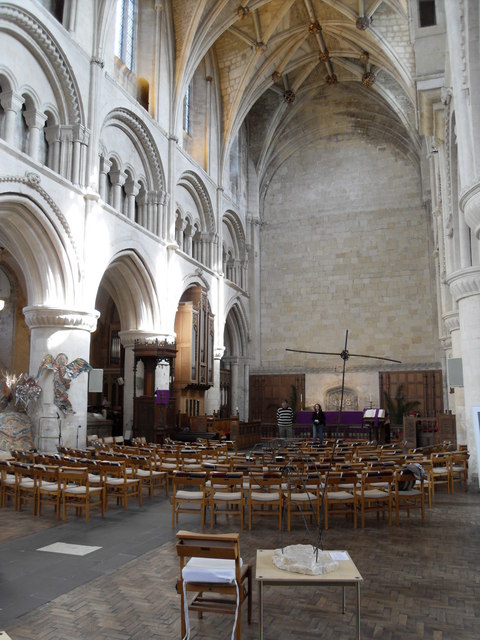|
Mary Ellen Bagnall-Oakeley
Mary Ellen Bagnall-Oakeley (1833–1904) was an English antiquarian, author, and painter known for her work in Bristol and south-east Wales. She was a governor of the Haberdashers' Monmouth School for Girls and the mother of nine children. Background Mary Ellen Bagnall, eldest daughter and heiress of John Bagnall and his wife Mary Ann Robbins, was born in 1833 in West Bromwich, Staffordshire. Her father John Bagnall (1794–1840), eldest son of John Bagnall, had become the senior member of John Bagnall and Sons, upon the death of his father in 1829. The firm had been established by his father, who had brought five of his sons into partnership with him in 1828, the year before his death. The company had extensive collieries and ironworks. Mary Ellen's father John died on 4 February 1840. In 1841, Mary Ellen lived in West Bromwich with her mother, younger sisters Jane and Kate, and seven servants. By 1851, the family had moved to Monmouth in Wales, where she resided with her wid ... [...More Info...] [...Related Items...] OR: [Wikipedia] [Google] [Baidu] |
West Bromwich
West Bromwich ( ) is a market town in the borough of Sandwell, West Midlands (county), West Midlands, England. Historic counties of England, Historically part of Staffordshire, it is north-west of Birmingham. West Bromwich is part of the area known as the Black Country, in terms of geography, culture and Black Country dialect, dialect. West Bromwich had a population of 77,997 in the 2011 Census. Initially a rural village, West Bromwich's growth corresponded with that of the Industrial Revolution, owing to the area's natural richness in ironstone and coal, as well as its proximity to canals and Rail transport, railway branches. It led to the town becoming a centre for Coal mining in the United Kingdom, coal mining, Brickworks, brick making, the iron industry and metal trades such as nails, springs and guns. The town's primary economy developed into engineering, manufacturing and the Automotive industry in the United Kingdom, automotive industry through the early 20th century. D ... [...More Info...] [...Related Items...] OR: [Wikipedia] [Google] [Baidu] |
Skenfrith Castle
Skenfrith Castle ( cy, Castell Ynysgynwraidd) is a ruined castle in the village of Skenfrith in Monmouthshire, Wales. The fortification was established by the Normans in the wake of the invasion of England in 1066, to protect the route from Wales to Hereford. Possibly commissioned by William fitz Osbern, the Earl of Hereford, the castle comprised earthworks with timber defences. In 1135, a major Welsh revolt took place and in response King Stephen brought together Skenfrith Castle and its sister fortifications of Grosmont and White Castle to form a lordship known as the "Three Castles", which continued to play a role in defending the region from Welsh attack for several centuries. At the end of the 12th century, Skenfrith was rebuilt in stone. In 1201, King John gave the castle to a powerful royal official, Hubert de Burgh. During the course of the next few decades, it passed back and forth between several owners, including Hubert, the rival de Braose family, and the Crown ... [...More Info...] [...Related Items...] OR: [Wikipedia] [Google] [Baidu] |
Grosmont Castle
Grosmont Castle is a ruined castle in the village of Grosmont, Monmouthshire, Wales. The fortification was established by the Normans in the wake of the invasion of England in 1066, to protect the route from Wales to Hereford. Possibly commissioned by William fitz Osbern, the Earl of Hereford, it was originally an earthwork design with timber defences. In 1135, a major Welsh revolt took place, and in response King Stephen brought together Grosmont Castle and its sister fortifications of Skenfrith and White Castle to form a lordship known as the " Three Castles", which continued to play a role in defending the region from Welsh attack for several centuries. King John gave the castle to a powerful royal official, Hubert de Burgh, in 1201. During the course of the next few decades it passed back and forth between several owners, including Hubert, the rival de Braose family, and the Crown. Hubert rebuilt the castle in stone, beginning with a new hall and then, on regain ... [...More Info...] [...Related Items...] OR: [Wikipedia] [Google] [Baidu] |
Bishop's Wood
Bishop's Wood (Welsh: ''Coed yr Esgob'') is a nature reserve in the Gower Peninsula, south Wales. The area consists of 46 acres (19 hectares) of limestone woodland and grassland. Part of the wood is classified as ancient woodland. The 1673 survey of Bishopston Manor indicates that it has been wooded since at least the seventeenth century. It was designated a Local Nature Reserve (LNR) in 1975, a Site of Special Scientific Interest (SSSI) in 2003 and Special Area of Conservation A Special Area of Conservation (SAC) is defined in the European Union's Habitats Directive (92/43/EEC), also known as the ''Directive on the Conservation of Natural Habitats and of Wild Fauna and Flora''. They are to protect the 220 habitats and a ... (SAC) in 2004. ReferencesCity and County of Swansea: Bishop's Wood Gower Peninsula Nature reserves in Swansea Sites of Special Scientific Interest in Wales Forests and woodlands of Swansea {{Swansea-geo-stub ... [...More Info...] [...Related Items...] OR: [Wikipedia] [Google] [Baidu] |
Daglingworth
Daglingworth is a Gloucestershire village in the valley of the River Dunt, near the A417 road connecting Gloucester and Cirencester. As with many smaller villages in the Cotswolds, most of the buildings are now private houses. Other properties are the church, the village hall, a stable & horse riding centre and Bridge Farm. The Church of the Holy Rood in the village is an Anglo-Saxon church with well-preserved stone carvings, including an Anglo-Saxon crucifixion tablet dating to 1015. There is also a canonical sundial on the south wall. The population taken at the 2011 census was 265. History In the late 19th century, George Witts made reference to Daglingworth Roman Villa: About the year 1690 the foundations of a Roman villa were discovered in the parish of Daglingworth, close to the Ermine Street, two and a half miles north-west of Cirencester. It was situated in a field called "Cave Close." I am not aware of any description of this, and am unable to give any details as t ... [...More Info...] [...Related Items...] OR: [Wikipedia] [Google] [Baidu] |
Middle Ages
In the history of Europe, the Middle Ages or medieval period lasted approximately from the late 5th to the late 15th centuries, similar to the post-classical period of global history. It began with the fall of the Western Roman Empire and transitioned into the Renaissance and the Age of Discovery. The Middle Ages is the middle period of the three traditional divisions of Western history: classical antiquity, the medieval period, and the modern period. The medieval period is itself subdivided into the Early, High, and Late Middle Ages. Population decline, counterurbanisation, the collapse of centralized authority, invasions, and mass migrations of tribes, which had begun in late antiquity, continued into the Early Middle Ages. The large-scale movements of the Migration Period, including various Germanic peoples, formed new kingdoms in what remained of the Western Roman Empire. In the 7th century, North Africa and the Middle East—most recently part of the Ea ... [...More Info...] [...Related Items...] OR: [Wikipedia] [Google] [Baidu] |
Malmesbury Abbey
Malmesbury Abbey, at Malmesbury in Wiltshire, England, is a religious house dedicated to Saint Peter and Saint Paul. It was one of the few English houses with a continuous history from the 7th century through to the dissolution of the monasteries. Monastic history In the later seventh century, the site of the Abbey was chosen by Maildubh, an Irish monk who established a hermitage, teaching local children. Toward the end of his life, in the late seventh century, the area was conquered by the Saxons.''Blackwell Encyclopedia of Anglo Saxon England'', p. 209. Malmesbury Abbey was founded as a Benedictine monastery around 676 by the scholar-poet Aldhelm, a nephew of King Ine of Wessex. The town of Malmesbury grew around the expanding Abbey and under Alfred the Great was made a burh, with an assessment of 12 hides. In AD 941, King Æthelstan was buried in the Abbey. Æthelstan had died in Gloucester in October 939. The choice of Malmesbury over the New Minster in Winchester indicat ... [...More Info...] [...Related Items...] OR: [Wikipedia] [Google] [Baidu] |
Monumental Effigies
An effigy is an often life-size sculptural representation of a specific person, or a prototypical figure. The term is mostly used for the makeshift dummies used for symbolic punishment in political protests and for the figures burned in certain traditions around New Year, Carnival and Easter. In European cultures, effigies were in the past also used for punishment in formal justice, when the perpetrator could not be apprehended, and in popular justice practices of social shaming and exclusion. Additionally, "effigy" is used for certain traditional forms of sculpture, namely tomb effigies, funeral effigies and coin effigies. There is a large overlap and exchange between the ephemeral forms of effigies. Traditional holiday effigies are often politically charged, for instance, when the generalised figures Año Viejo (the Old Year) or Judas in Latin America are substituted by the effigy of a despised politician. Traditional forms are also borrowed for political protests. In India, ... [...More Info...] [...Related Items...] OR: [Wikipedia] [Google] [Baidu] |
Ecclesiastic
{{Short pages monitor ... [...More Info...] [...Related Items...] OR: [Wikipedia] [Google] [Baidu] |
Effigies
An effigy is an often life-size sculptural representation of a specific person, or a prototypical figure. The term is mostly used for the makeshift dummies used for symbolic punishment in political protests and for the figures burned in certain traditions around New Year, Carnival and Easter. In European cultures, effigies were in the past also used for punishment in formal justice, when the perpetrator could not be apprehended, and in popular justice practices of social shaming and exclusion. Additionally, "effigy" is used for certain traditional forms of sculpture, namely tomb effigies, funeral effigies and coin effigies. There is a large overlap and exchange between the ephemeral forms of effigies. Traditional holiday effigies are often politically charged, for instance, when the generalised figures Año Viejo (the Old Year) or Judas in Latin America are substituted by the effigy of a despised politician. Traditional forms are also borrowed for political protests. In India, ... [...More Info...] [...Related Items...] OR: [Wikipedia] [Google] [Baidu] |
Forest Of Dean
The Forest of Dean is a geographical, historical and cultural region in the western part of the county of Gloucestershire, England. It forms a roughly triangular plateau bounded by the River Wye to the west and northwest, Herefordshire to the north, the River Severn to the south, and the City of Gloucester Gloucester ( ) is a cathedral city and the county town of Gloucestershire in the South West of England. Gloucester lies on the River Severn, between the Cotswolds to the east and the Forest of Dean to the west, east of Monmouth and east of th ... to the east. The area is characterised by more than of mixed woodland, one of the surviving ancient woodlands in England. A large area was reserved for royal hunting before 1066, and remained as the second largest Crown forests, crown forest in England, after the New Forest. Although the name is used loosely to refer to the part of Gloucestershire between the Severn and Wye, the Forest of Dean proper has covered a muc ... [...More Info...] [...Related Items...] OR: [Wikipedia] [Google] [Baidu] |







